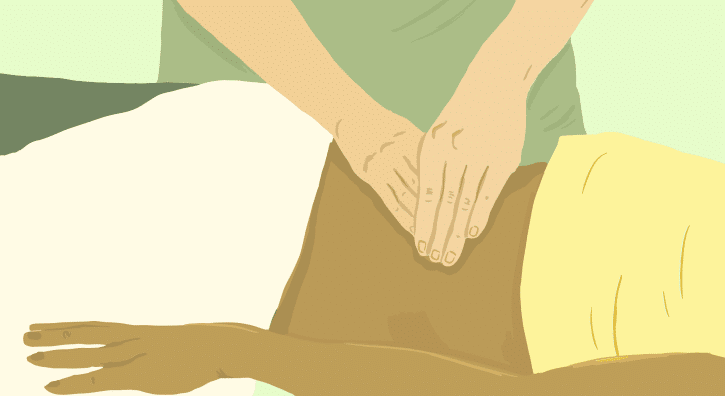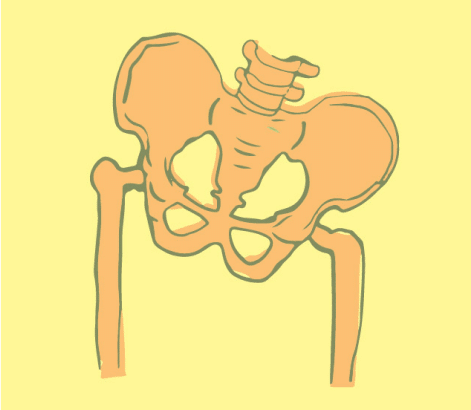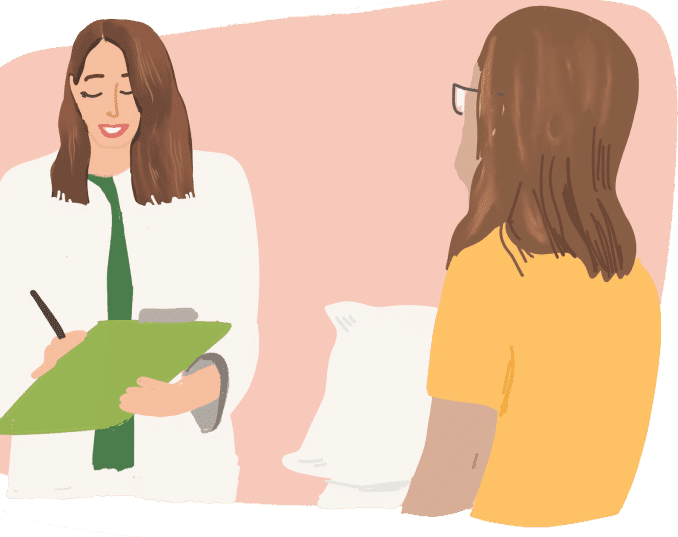

Symptoms
- Pelvic pain may be felt as intense heat, stinging, or pulsing discomfort in sensitive areas such as the anus, vulva, vagina, or perineum
- Sexual contact, snug clothing, and extended periods of sitting may all trigger or worsen this discomfort
- Activities involving movement or strain can lead to increased pain levels
- Related urinary symptoms might include a strong need to urinate, painful urination, or leakage episodes
- Digestive issues such as gas, bloating, hard stools, or unpredictable bowel movements often appear with pelvic pain
- Triggers like tampons or intercourse are common, but for many, symptoms occur without any identifiable cause
- Symptom severity and frequency vary—some experience ongoing pain, while others deal with periodic episodes

Symptoms
- Pelvic pain may be felt as intense heat, stinging, or pulsing discomfort in sensitive areas such as the anus, vulva, vagina, or perineum
- Sexual contact, snug clothing, and extended periods of sitting may all trigger or worsen this discomfort
- Activities involving movement or strain can lead to increased pain levels
- Related urinary symptoms might include a strong need to urinate, painful urination, or leakage episodes
- Digestive issues such as gas, bloating, hard stools, or unpredictable bowel movements often appear with pelvic pain
- Triggers like tampons or intercourse are common, but for many, symptoms occur without any identifiable cause
- Symptom severity and frequency vary—some experience ongoing pain, while others deal with periodic episodes

Associated Diagnoses
Diagnoses such as Endometriosis, Vulvodynia, Interstitial Cystitis/Painful Bladder Syndrome, Pudendal Neuralgia, Lichen Sclerosus, Lichen Planus, and Irritable Bowel Syndrome are associated with pelvic pain and pelvic floor dysfunction.


Causes of Pelvic Pain
- Recurrent bladder and vaginal infections, along with overlapping issues related to gastrointestinal, urologic, gynecologic, or dermatological systems
- A majority of chronic pelvic pain sufferers also experience some form of pelvic floor muscle dysfunction
- Medications like oral contraceptives, hormonal acne treatments, and therapies aimed at managing Endometriosis or PCOS
- Pelvic surgeries, whether for gynecologic reasons or complications following childbirth, often contribute to discomfort
- Accidents or injuries that impact bones, joints, or soft tissues within the pelvic framework
- Structural misalignments, such as SI joint dysfunction, hip imbalances, scoliosis, or variations in leg length
- Vaginal birth, which can lead to strain or trauma in the pelvic floor muscles
- Menopause and the hormonal transitions that affect tissue flexibility and strength
- Genital injury, particularly from procedures involving cutting or mutilation
Causes of Pelvic Pain
- Recurrent bladder and vaginal infections, along with overlapping issues related to gastrointestinal, urologic, gynecologic, or dermatological systems
- A majority of chronic pelvic pain sufferers also experience some form of pelvic floor muscle dysfunction
- Medications like oral contraceptives, hormonal acne treatments, and therapies aimed at managing Endometriosis or PCOS
- Pelvic surgeries, whether for gynecologic reasons or complications following childbirth, often contribute to discomfort
- Accidents or injuries that impact bones, joints, or soft tissues within the pelvic framework
- Structural misalignments, such as SI joint dysfunction, hip imbalances, scoliosis, or variations in leg length
- Vaginal birth, which can lead to strain or trauma in the pelvic floor muscles
- Menopause and the hormonal transitions that affect tissue flexibility and strength
- Genital injury, particularly from procedures involving cutting or mutilation

Diagnostic Challenges
Receiving the right diagnosis for pelvic pain is a process that can take much longer than it should. Research has found that the average wait time is around five years—and for some conditions like Endometriosis, that delay can be as long as 11 years. This is because pelvic floor dysfunction often mimics the symptoms of more familiar issues, such as bladder infections, UTIs, yeast infections, or STIs. Many women spend years being misdiagnosed and treated with little success. Traditional diagnostic tools frequently fail to detect pelvic floor dysfunction, leaving physicians unsure of how to proceed. As a result, it’s very common for women to reach pelvic floor therapy unaware that their pelvic muscles might be the key to resolving their chronic pain.
Diagnostic Challenges
Receiving the right diagnosis for pelvic pain is a process that can take much longer than it should. Research has found that the average wait time is around five years—and for some conditions like Endometriosis, that delay can be as long as 11 years. This is because pelvic floor dysfunction often mimics the symptoms of more familiar issues, such as bladder infections, UTIs, yeast infections, or STIs. Many women spend years being misdiagnosed and treated with little success. Traditional diagnostic tools frequently fail to detect pelvic floor dysfunction, leaving physicians unsure of how to proceed. As a result, it’s very common for women to reach pelvic floor therapy unaware that their pelvic muscles might be the key to resolving their chronic pain.
Treatment:
How We Can Help You

When pelvic pain won’t go away, a detailed pelvic floor physical and occupational therapy evaluation can be a turning point—especially for women in Sherman Oaks who’ve tried everything else. This comprehensive process includes a full review of your health history, including any previous diagnoses and the success (or lack thereof) of treatments you’ve tried. Many women who reach this point are emotionally fatigued and searching for something that actually works. During your physical and occupational therapy evaluation, we examine key aspects like muscle strength, tissue response, nerve sensitivity, joint alignment, and how your body functions in motion. After gathering this information, your therapist will explain what might be contributing to your symptoms and outline a strategy designed specifically for your recovery. Most women participate in weekly sessions for about three months, with exercises assigned for home practice. Our approach also includes close coordination with your doctors and specialists, ensuring your care is collaborative and thorough. We’re here to help you feel better—and stay better.

Treatment:
How We Can Help You
When pelvic pain won’t go away, a detailed pelvic floor physical and occupational therapy evaluation can be a turning point—especially for women in Sherman Oaks who’ve tried everything else. This comprehensive process includes a full review of your health history, including any previous diagnoses and the success (or lack thereof) of treatments you’ve tried. Many women who reach this point are emotionally fatigued and searching for something that actually works. During your physical and occupational therapy evaluation, we examine key aspects like muscle strength, tissue response, nerve sensitivity, joint alignment, and how your body functions in motion. After gathering this information, your therapist will explain what might be contributing to your symptoms and outline a strategy designed specifically for your recovery. Most women participate in weekly sessions for about three months, with exercises assigned for home practice. Our approach also includes close coordination with your doctors and specialists, ensuring your care is collaborative and thorough. We’re here to help you feel better—and stay better.
How Can We Help You?
We’re here to help. If you have any inquiries, insights, or thoughts you’d like to share, please fill out the form below. Be sure to include your email address so we can reach out to you directly with a thorough and timely response. Your privacy matters—every submission will be kept completely confidential.

Join The Newsletter. Win a copy of our book, “Pelvic Pain Explained!”
We love getting to know our website visitors. Please tell us a little bit about yourself and get the latest info via PHRC e-newsletter!
*Subscribers automatically eligible to win our book, “Pelvic Pain Explained.”
With Pelvic Pain Explained, the focus is on understanding the full scope of pelvic pain—from identifying its source to recognizing why it’s so frequently misdiagnosed or misunderstood. The narrative also explores the challenge of sorting through countless care options and reveals how living with an unseen condition can profoundly affect emotional resilience and close relationships.


